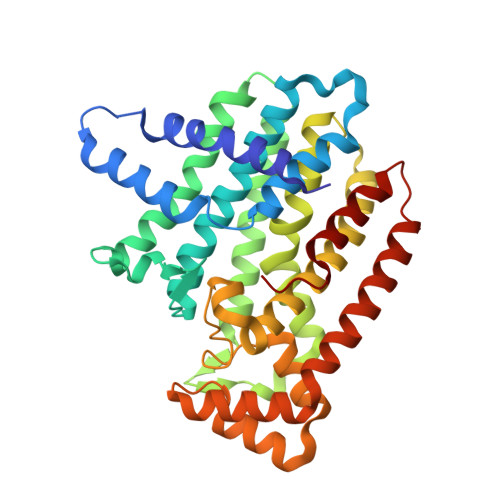Metal-dependent enzyme symmetry guides the biosynthetic flux of terpene precursors.
Ecker, F., Vattekkatte, A., Boland, W., Groll, M.(2023) Nat Chem 15: 1188-1195
- PubMed: 37308711
- DOI: https://doi.org/10.1038/s41557-023-01235-9
- Primary Citation of Related Structures:
8A6U, 8A6V, 8A6Z, 8A70, 8A73, 8A74, 8A78, 8A7A, 8A7B, 8A7C, 8A7J, 8A7K, 8A7L, 8A7R, 8A7U - PubMed Abstract:
Terpenoids account for more than 60% of all natural products, and their carbon skeletons originate from common isoprenoid units of different lengths such as geranyl pyrophosphate and farnesyl pyrophosphate. Here we characterize a metal-dependent, bifunctional isoprenyl diphosphate synthase from the leaf beetle Phaedon cochleariae by structural and functional analyses. Inter- and intramolecular cooperative effects in the homodimer strongly depend on the provided metal ions and regulate the biosynthetic flux of terpene precursors to either biological defence or physiological development. Strikingly, a unique chain length determination domain adapts to form geranyl or farnesyl pyrophosphate by altering enzyme symmetry and ligand affinity between both subunits. In addition, we identify an allosteric geranyl-pyrophosphate-specific binding site that shares similarity with end-product inhibition in human farnesyl pyrophosphate synthase. Our combined findings elucidate a deeply intertwined reaction mechanism in the P. cochleariae isoprenyl diphosphate synthase that integrates substrate, product and metal-ion concentrations to harness its dynamic potential.
Organizational Affiliation:
Center for Protein Assemblies, Technical University of Munich, Garching, Germany.


















